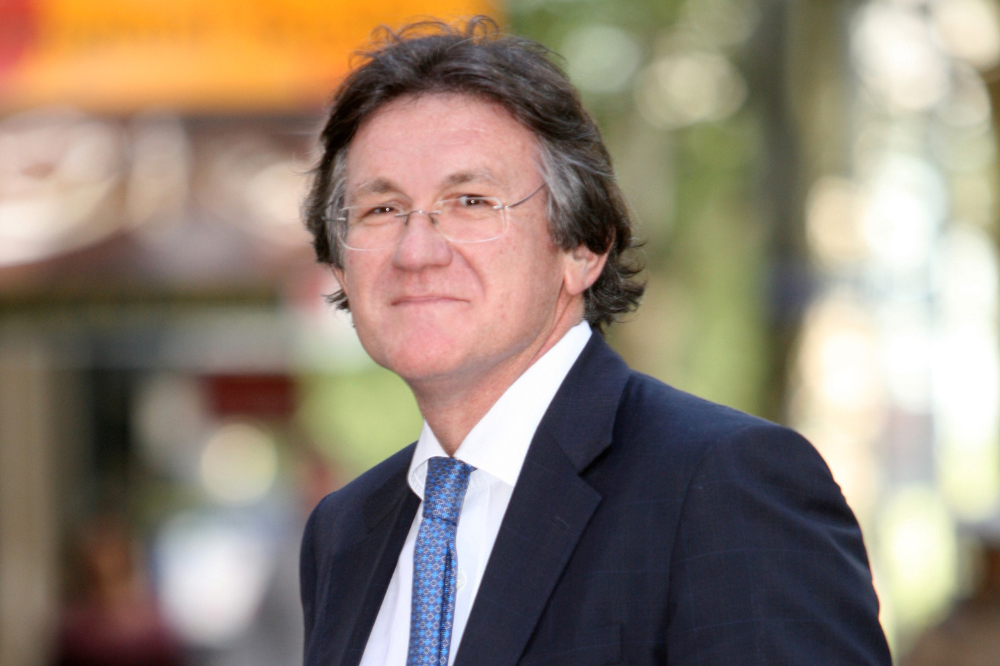NAB has revised its forecast for rates of interest – the main financial institution is now predicting the official money fee will attain 4.6% by August, following altered expectations about development and inflation.
The financial institution had beforehand elevated its fee name to 4.35% following the Reserve Financial institution of Australia’s determination on June 6 to elevate the OCR to 4.1%, however in a NAB Financial Police Replace launched at the moment it has now “tentatively” added a further 25 foundation factors.
NAB economists, led by group chief economist Alan Oster (pictured above), stated they had been unsure of precisely when these hikes would happen however pencilled in 0.25% will increase for each July and August.
The RBA board is because of meet subsequent on July 4, and all eyes will probably be on the central financial institution following its determination this month to lift rates of interest for the twelfth time.
“Whereas inflation has clearly peaked, and we (just like the RBA) see inflation returning to the band by 2025, the prolonged interval of inflation above goal amidst a decent labour market poses the danger of stronger wage and value expectations changing into imbedded,” Oster stated.
Economic system is slowing
Whereas NAB’s Month-to-month Enterprise Survey for Might survey confirmed that the economic system was slowing – as shopper spending started to stall – inflation and wage information nonetheless present that value pressures stay elevated, Oster stated in the Financial Coverage Replace.
“This was highlighted by Q1 nationwide accounts which noticed quarterly GDP development of simply 0.2% and growing indicators of charges and inflation weighing on the buyer, whereas dwelling funding continued to fall,” he stated.
The family earnings account confirmed an extra moderation within the financial savings fee. Whereas inflationary strain has peaked, each the home ultimate demand and consumption deflators stays excessive.
“Curiously, common earnings per hour (the broadest measure of labour prices, together with bonuses and different funds) whereas accelerating continues to trace beneath 4%,” stated Oster.
Home labour value pressures to dictate inflation
NAB additionally predicts that home labour value pressures will probably be necessary for the way inflation moderates.
Oster stated that world items inflation pressures had been waning as development slowed and freight prices normalised, pointing to a major easing in upstream value pressures for home shopper items costs.
Nonetheless, it stays unsure how rapidly companies will cross on any easing in costs to the buyer.
NAB stated the important thing dangers to inflation remaining larger for longer can be pushed by providers as had occurred globally.
Whereas measured wage development, in response to the wage value index (WPI) at 3.7% yr on yr is significantly beneath that of different superior economies, the common wage improve of these folks (within the non-public sector) receiving a pay rise in latest quarters is above 4%.
Oster stated this pointed to the danger that total WPI would proceed to strengthen in coming quarters, with the newest improve within the nationwide minimal wage offering for even sooner charges of wage development for a major proportion of the labour drive.
With weak cyclical productiveness development, Oster stated it was unlikely that inflation would fall again rapidly in direction of the center of the two% to three% goal band.
“Certainly the RBA has famous that at current wage development is in step with inflation returning to the goal band with the proviso that ‘productiveness development picks up’,” he stated.
“In the end, latest tightening actions have been about inflation expectations –whereas beforehand effectively anchored there’s a rising danger that ongoing value rises proceed to feed again into value setting behaviour within the economic system.”
Progress to gradual whereas charges return to impartial ranges in 2024
NAB has additionally dialled again its expectations for development over this yr and subsequent, predicting GDP development of simply 0.5% over 2023 and 0.9% over 2024.
Oster stated that whereas the economic system remained resilient final yr, there have been growing indicators that rates of interest had been starting to stream via, with spending development slowing, an ongoing affect on housing building and softening capital expenditure expectations.
NAB additionally famous that among the affect of earlier rate of interest rises had nonetheless to happen, with about 75bps of hikes but to be handed onto mortgage holders.
The financial institution’s economists additionally stated unemployment “appears to be starting to edge up”. They anticipated unemployment to achieve 4.3% by yr’s finish and 5% by the top of 2024.
“On our expectation that the economic system will gradual noticeably within the second half of 2023 and into 2024, seeing annual GDP development of round 0.5% this yr – its slowest fee for the reason that Nineteen Nineties recession – and the unemployment fee rising above the NAIRU (non-accelerating inflation fee of unemployment) the RBA might want to return to forward-looking metrics when setting coverage,” Oster stated.
He expects that by mid-2024 slower development may have a major affect on the labour market and inflation strain will ease. “We proceed to count on the money fee to normalise to a extra impartial fee of round 3% with fee cuts prone to begin in Q2 2024.”


